Citizen Science Update: 2022 in Review
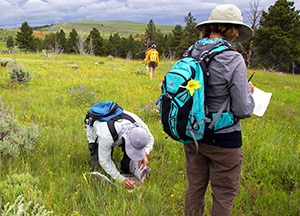
BY LARA FITZPATRICK, TREVOR FLOREANI, GREG POHL, AND RICHARD SCHNEIDER
Citizen science continues to grow in popularity and its contributions to the conservation of biodiversity are increasing. The Franklin’s ground squirrel project Nature Alberta initiated last year provides a good example. Because data on this species are lacking in Alberta, it is currently listed as “data deficient” rather than a species at risk. However, by compiling citizen science data collected over the past decade (57 observations), Nature Alberta has shown that the squirrel’s Alberta range has been contracting, particularly in the region around Edmonton where these squirrels used to be frequently encountered. This is strong grounds for officially listing this species as being at risk. The importance of citizen science observations is clearly apparent when you consider that the official government species database includes only two Franklin’s ground squirrel records over the past decade (plus nine squirrels killed as part of a predator reduction study). You can read the full story about this initiative in the Winter 2023 issue of Nature Alberta Magazine.
In 2022, Nature Alberta also lent its support to three locally run citizen science initiatives: the May Bird Count, the May Plant Count, and the Biodiversity Challenge. More than 1,000 people from across Alberta participated, submitting observations on more 1,500 different species. Here we take a look back over the year and provide highlights from each of the three projects.
May Bird Count
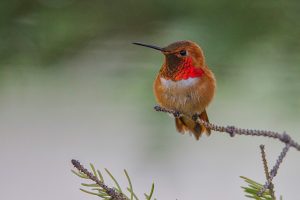
Rufous hummingbird. Tony LePrieur
The Alberta May Bird Count has been running since 1976 and has grown steadily over the years. The first Count identified 184 different species, and another 156 species have been added since then. This brings us to a cumulative total of 340 species.
The 2022 Count took place over two days during the last week of May (the specific dates varied among count areas). This year there were 508 participants, which was 28% above the average over the last 15 years. The number of species recorded was 271, which is right at the 15-year average. The total number of birds observed was an incredible 208,910, just under the average annual tally.
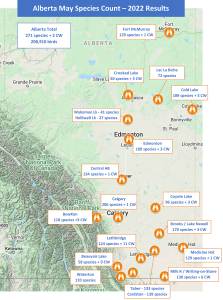
Alberta bird count map, 2022.
One new species was reported this year: a lesser black-backed gull observed in Fort McMurray. Unusual species reported this year included a sage thrasher and a Lewis’s woodpecker in Brooks, an eastern bluebird in Kananaskis, a Pacific loon in Lethbridge, a great crested flycatcher in Edmonton, and American black ducks in Lac La Biche. No thick-billed longspurs or lark buntings were reported this year, even though these two species were reported at least 14 of the last 15 years. Additional details are provided in a summary report available at naturealberta.ca/may-species-count.
For the 2022 Count, participants were encouraged to use eBird for recording observations. This simplifies count logistics and, more importantly, it ensures the observations contribute to the eBird database, which is of great value to birders and conservation scientists. This year, all of the observations made in the two largest count centres, Calgary and Edmonton, were submitted to eBird. Several other count locations are beginning the transition to eBird and hopefully all sites will eventually adopt its use as standard practice.
May Plant Count
The annual Alberta May Plant Count is focused on recording the phenology (flowering stage) of vascular plants. During the last week of May, participants head out to their favourite outdoor spots to record which species are in bloom. A standardized coding system is used to distinguish plants that are about to flower, plants in full bloom, and plants that have faded flowers.
The main goals of the Count are to increase awareness of native plants and to get people thinking about phenology and its inherent variability. The observations are useful for tracking plant species in the province and trends related to climate change.
In previous years, observations were manually recorded on forms that were later submitted to Count organizers. In 2022, participants were encouraged to submit their observations using the iNaturalist smartphone app (though the traditional method was still permitted). This was seen as a great way to increase participation in the Count, given the huge popularity of iNaturalist. It also provided a reliable way to store observations and photos and easy public access to all of the information (see inaturalist.ca/projects/alberta-may-plant-count). Moreover, it meant that the May Plant Count was contributing to the iNaturalist database, which is increasingly used to support conservation efforts.
There were 32 participants in the 2022 Count who submitted a total of 557 observations (split between iNaturalist and manual submissions). Based on preliminary data compilation, 205 plant species were identified in 23 locations across the province. Not surprisingly, the species with the most observations was saskatoon, followed by early blue violet, rough-fruited fairybells, wild strawberry, and prairie-crocus. The general consensus from most participants was that the spring of 2022 was on the cool side and many species were behind in blooming stage compared to typical years.
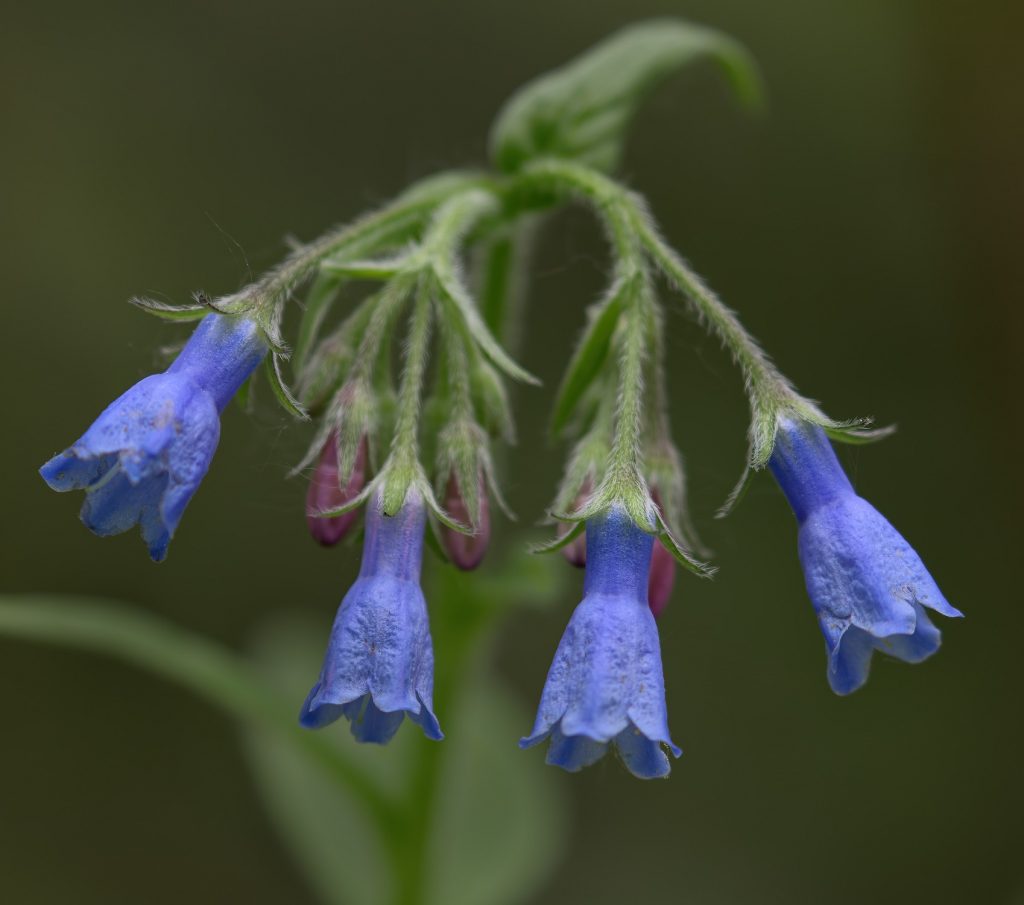
Tall lungwort. Richard Schneider
Biodiversity Challenge
The Biodiversity Challenge was inspired by the City Nature Challenge, a global biodiversity “contest” where cities compete against one another to survey their urban biodiversity on the last weekend in April. The iNaturalist app is used to record the observations. The goal is to produce an inventory of the biodiversity of a given place and to encourage public engagement with nature and conservation science. The data collected help researchers determine species ranges, track threatened species, monitor invasive pests, and note important new sightings.
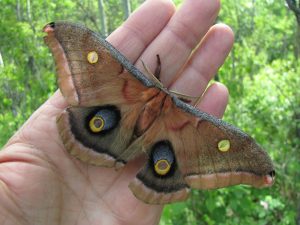
Polyphemus moth. Greg Pohl
Several municipalities in Alberta have participated in the global City Nature Challenge over the past few years. However, the early spring date of the event, set by the original U.S.-based organizers, is not ideal for our climate. Therefore, in 2022, local volunteer organizers created a parallel event — the Alberta Biodiversity Challenge — which ran from June 9–12. This survey covered the entire province, with subprojects for seven urban centres (see table). The idea quickly spread to other municipalities across western Canada and the northwestern U.S., and they held their own Biodiversity Challenges on the same date (see inaturalist.ca/projects/2022-prairie-biodivercity-challenges). There was also a follow-up survey held in mid-September.
In the 2022 survey, Edmonton had the greatest number of species identified; however, Calgary had the most participants and Red Deer had the highest participation rate per capita. There were also a large number of observations made outside of the seven major centres (see table). Given that there was limited promotion of the Biodiversity Challenge outside of urban centres, many of these non-urban observations may have been made independent of the official event.
Table 1. Summary results from the 2022 Alberta Biodiversity Challenge.
| Location | Number of Participants | Number of Observations | Total Species | Participants Per Capita (x 10-4) |
| Metro Calgary | 153 | 1,146 | 395 | 2.54 |
| Metro Edmonton | 145 | 2,915 | 841 | 5.64 |
| Fort McMurray | 5 | 31 | 26 | 3.42 |
| Grande Prairie | 1 | 2 | 2 | 0.28 |
| Lethbridge | 24 | 55 | 44 | 4.32 |
| Medicine Hat | 6 | 27 | 23 | 3.53 |
| Red Deer | 14 | 93 | 76 | 7.28 |
| All Alberta | 671 | 7,686 | 1,491 | 1.48 |
Some of the more interesting and unusual observations made during the Biodiversity Challenge included: a northern scorpion, fluorescing under UV light in Lethbridge; a short-horned lizard, seen near Manyberries; and the first-ever iNaturalist observation of the newly described moth species Caloreas hyperboreas. The full listing of species observed can be viewed on the iNaturalist website: inaturalist.ca/projects/alberta-biodivercity-challenge-2022.
Get Involved
Citizen science initiatives like these depend on the dedicated efforts of local volunteer organizers and the broad participation of the naturalist community. We thank everyone who was involved in 2022 and helped to make these projects a success.
All the projects discussed here will run again in 2023 and we encourage everyone to participate. It’s a great way to support conservation science — and it’s fun! Our Franklin’s ground squirrel project will continue, now in collaboration with Dr. Jessica Haines at MacEwan University. We will also begin compiling data on leopard frogs and thirteen-lined ground squirrels — species that are also in need of better monitoring. If you see any of these species, be sure to take a photo and submit your observation to iNaturalist (you can do this at home if you don’t have the iNaturalist app on your phone).
For additional information including important event dates to remember, visit Nature Alberta’s citizen science webpage: naturealberta.ca/citizen-science. There you will find background information on citizen science and how it is used to advance conservation research, as well as guides on getting started with eBird and iNaturalist and a comprehensive list of projects that you can participate in. We look forward to seeing you out in the field this spring.
Lara Fitzpatrick is the Provincial Count Compiler for the May Bird Count. Trevor Floreani is an Organizer of the May Plant Count. Greg Pohl is the Lead Coordinator of the Biodiversity Challenge. Richard Schneider is the Executive Director of Nature Alberta.
This article originally ran in Nature Alberta Magazine – Spring 2023.
